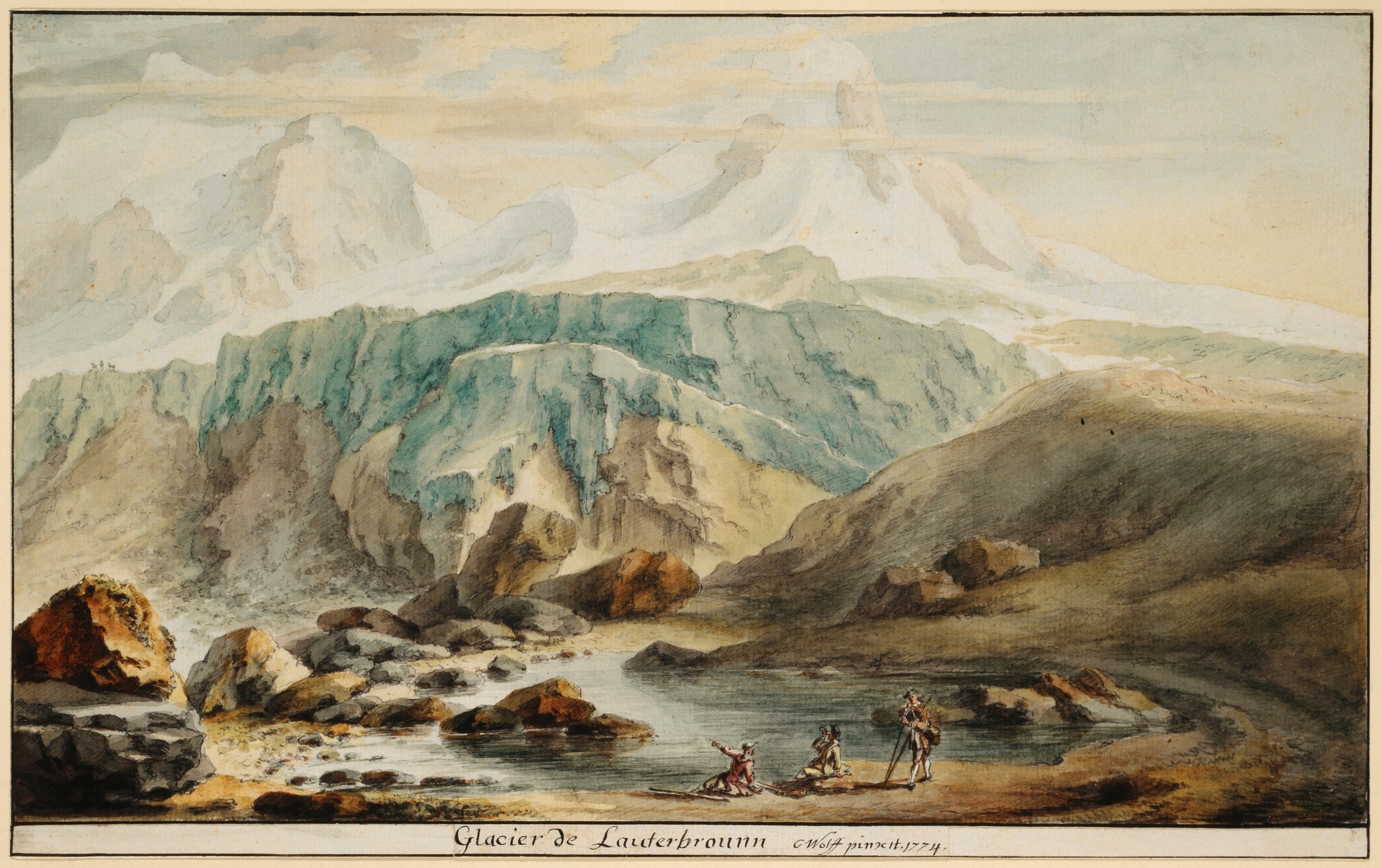Caspar Wolf
Drawings and Prints
For painters like Caspar Wolf (1735–1783), drawings were the indispensable foundation of the creative process. They served a variety of functions. For instance, Wolf produced nature studies of motifs such as individual rocks and trees as well as caves and entire panoramas. Pencil sketches in which he recorded his observations generally also underlie the oil studies executed in the natural setting; hence the accessory figure of the draftsman in many of his landscapes. But Wolf also worked on paper to map out the compositions for paintings he then transferred to the canvas using grids. And he made standalone drawings, sometimes based on his own paintings, that capture atmospheric views of natural scenes.
The approx. 200 oil paintings Caspar Wolf executed after excursions into the Swiss Alps with the Berne publisher Abraham Wagner and the theologian Jakob Samuel Wyttenbach served as the sources for several series of engravings. In collaboration with Wagner, Wolf published these outline etchings, some of them hand-colored, and color aquatints with accompanying texts in several German and French editions that proved widely popular.

